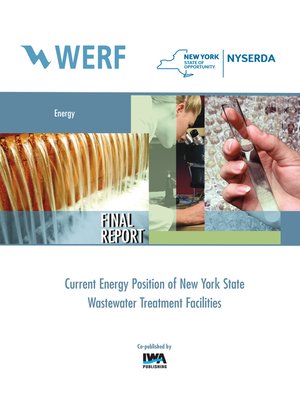Current Energy Position of New York State Wastewater Treatment Facilities
ebook ∣ WERF Research Report
By Nancy Andrews

Sign up to save your library
With an OverDrive account, you can save your favorite libraries for at-a-glance information about availability. Find out more about OverDrive accounts.
Find this title in Libby, the library reading app by OverDrive.



Search for a digital library with this title
Title found at these libraries:
| Library Name | Distance |
|---|---|
| Loading... |
In 2008, the New York State Energy Research and Development Authority (NYSERDA) published the "Statewide Assessment of Energy Use by the Municipal Water and Wastewater Sector" documenting 2003/2004 energy use at New York State wastewater facilities. Since the publication of these data, interest in energy efficiency and energy generation has grown considerably. Survey data indicated that a third of the respondents had completed capital projects to reduce energy use, and 65 percent indicated that they have future energy projects planned. At the same time, regulatory and technology changes such as tighter nutrient limits have added to many plants' electrical demands.This research assesses the magnitude of energy performance shifts over the past 10 years based on the net effect of efficiency gains, increased electrical production, and increased process equipment loads. In facilities larger than 75 mgd, an overall trend toward increased average electrical energy consumption was observed, with recent implementation of nutrient removal being the most significant factor in this trend. Small and medium-sized facilities (less than 75 mgd) appear to be slightly improving their energy performance based on analysis of biochemical oxygen demand (BOD)-normalized energy metrics (kilowatt-hours per pound of BOD). Water resource recovery facilities with more developed energy approaches in their organization were more likely to have completed capital projects, operational optimization, and building-related improvements to reduce energy use.







